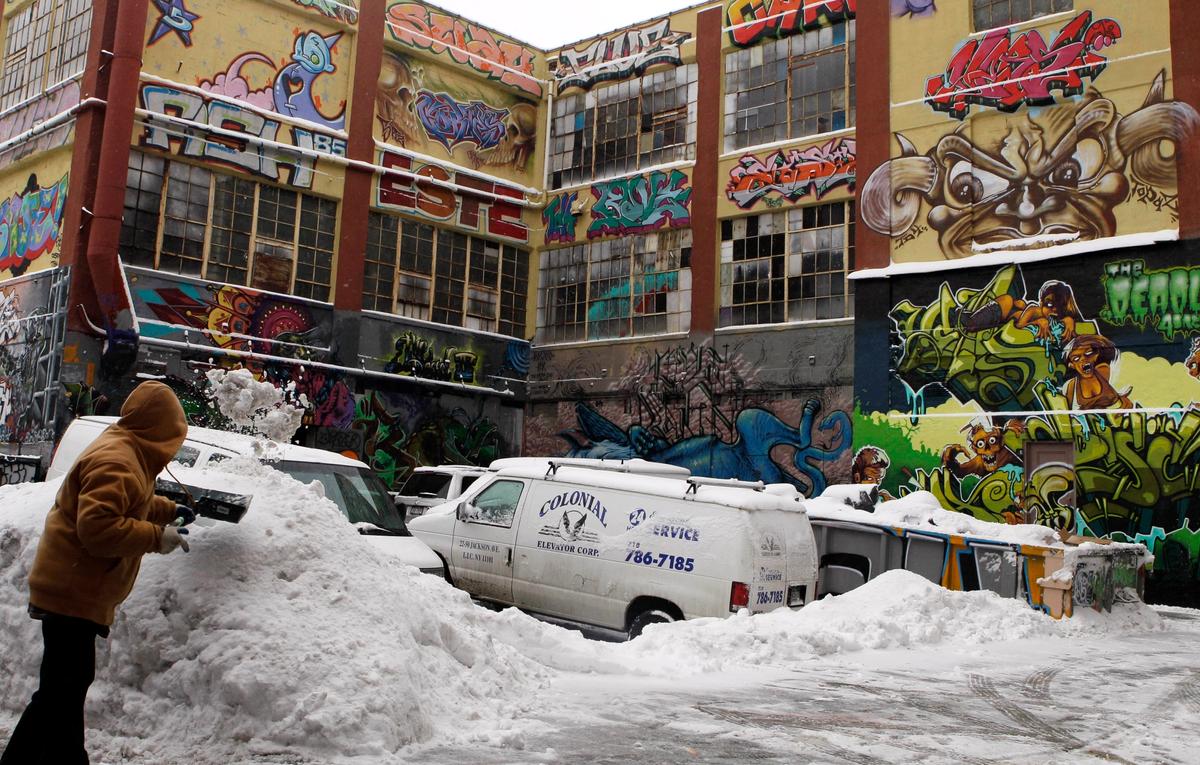Was the street art covering 5Pointz, a largely empty warehouse in Long Island City, Queens, significant enough to preserve under US federal law? A federal judge in Brooklyn in currently considering the arguments in a case that tests the limits of the Visual Artists Rights Act (Vara), and could soon decide whether a developer Gerald Wolkoff and his companies violated the act when he tore down the graffiti-covered building to construct residential towers and what, if any, damages they will pay.
The case is being closely watched because Vara gives artists the right to preserve their work only if it is of “recognised stature”. In November, a Brooklyn jury decided in favour of the artists in a verdict, in effect saying street art deserves protection even when, as at 5Pointz, thousands of works were painted over to continually make way for new art. But the jury verdict was only a recommendation.
On Monday, both parties filed their briefs to the federal judge who presided at the trial, Frederic Block. These make clear that the thorny concept of “recognised stature” is still very much up for debate. Vara itself does not define the term and case law discussing it is sparse. “We’re working with a clean slate”, said Judge Block when the trial opened.
The judge instructed the jury that a work must meet two criteria to be protect under Vara. “First, that the work… is viewed as meritorious,” Block said “and second, that this stature is recognised by art experts, other members of the artistic community, or some cross-section of society.”
But what kind of evidence is needed to prove this? The 5Pointz artists had only one art expert testify specifically about their works' importance, Renée Vara, a New York-based appraiser, curator and art advisor, although the judge told the jury that a single expert with the right credentials was enough. (Her name is a happy coincidence.) Wolkoff’s lawyers, however, maintain that “there must be a consensus by a group of people”, according to the brief.
The plaintiffs also pointed to news articles, gallery shows, and other work they did for high-profile brands like Nike as recognition of their street art. The defendants argue that this evidence falls short because most of it concerns art that was not part of the 5Pointz complex, was created after the lawsuit was filed, or is from the plaintiffs’ own social media posts. “And of the articles that actually depict the work, there is virtually no commentary on [its] merit,” Wolkoff’s brief states.
In their brief, the plaintiffs argue that the damages the jury called for—between $750 and $55,000—should be increased to the maximum Vara permits, or $150,000 for each of the 49 works, both to deter others and because Wolkoff willfully destroyed their art. When the developer demolished 5Pointz in 2014, they say, he knew the artists were asserting their rights under Vara; they’d already gone to court in an unsuccessful attempt to prevent the building from being destroyed.
Although 5Pointz was the first jury trial in this little-litigated area, there are benefits to having the judge decide the case. The defendants’ attorney declined to comment, but Eric Baum, the plaintiffs’ lawyer, said the law is “complicated” and a written decision “will help guide parties in the future”.


